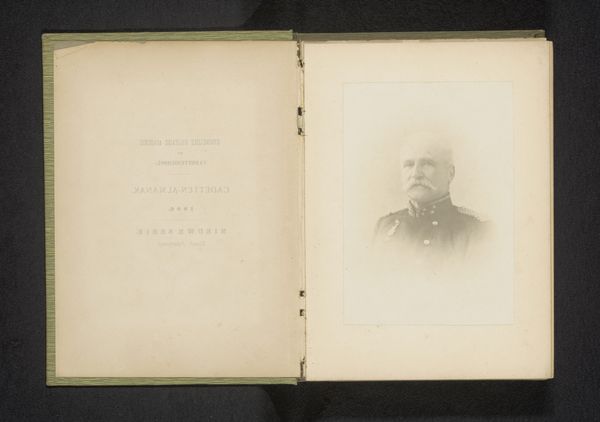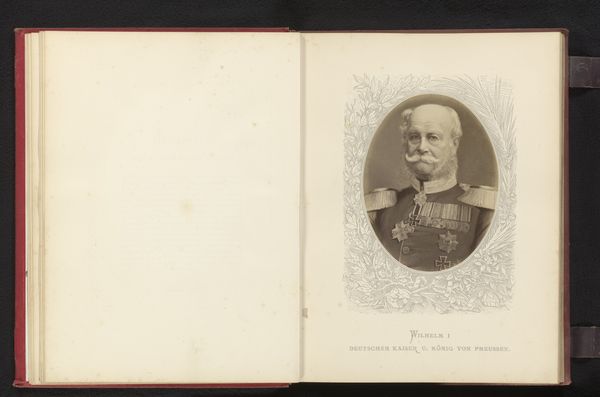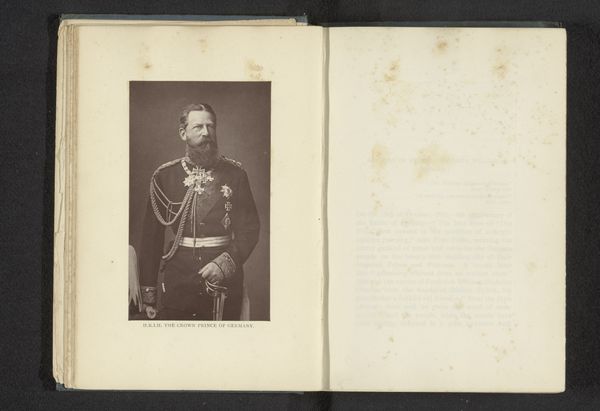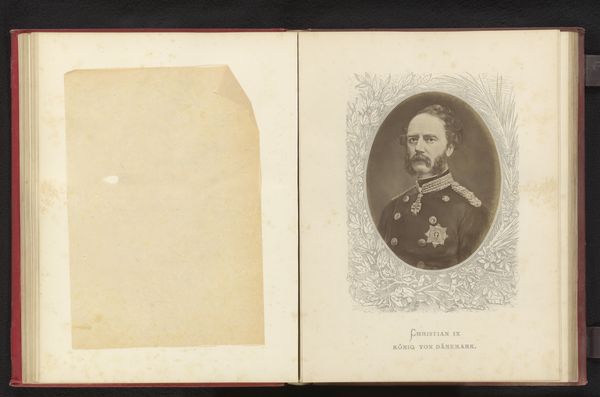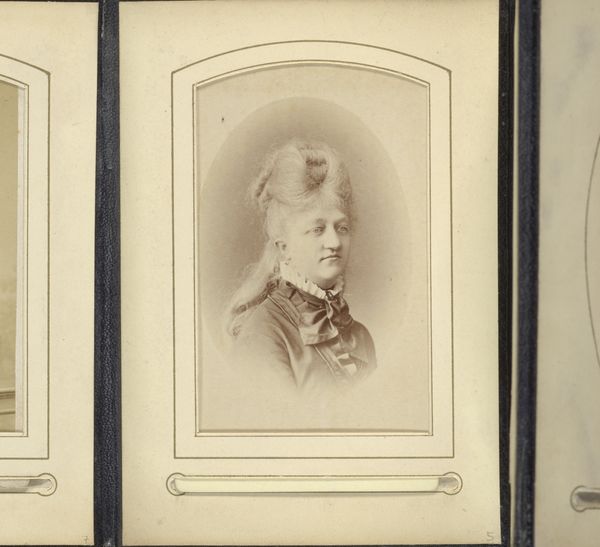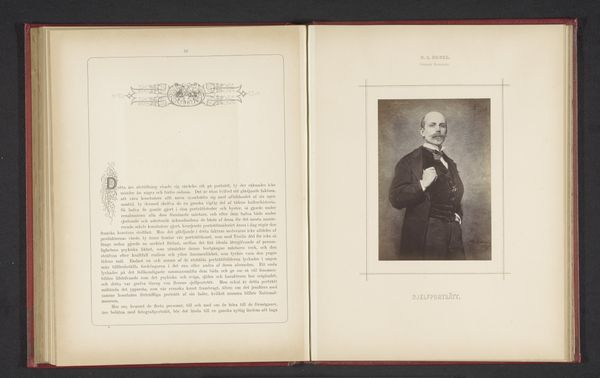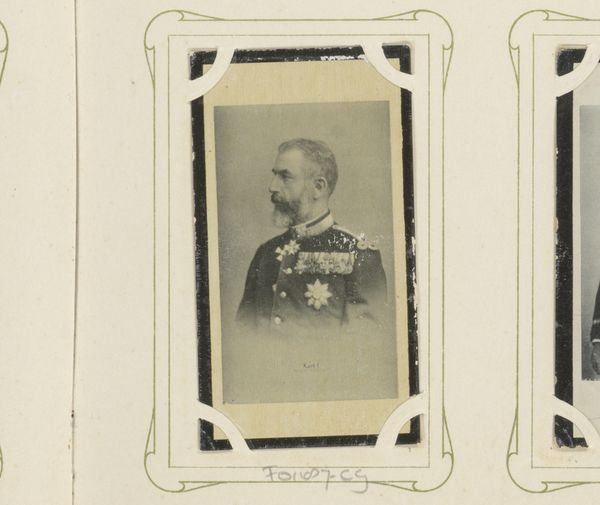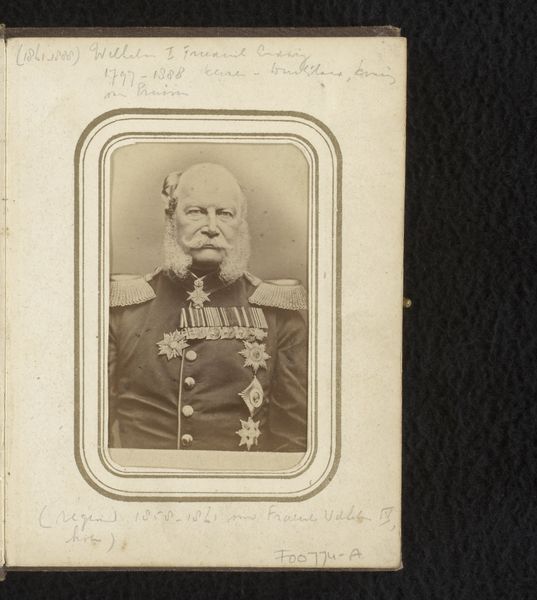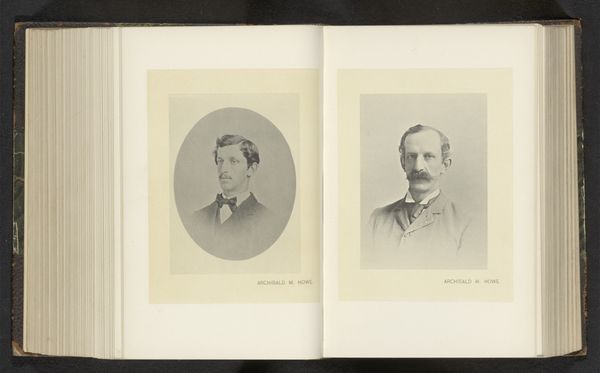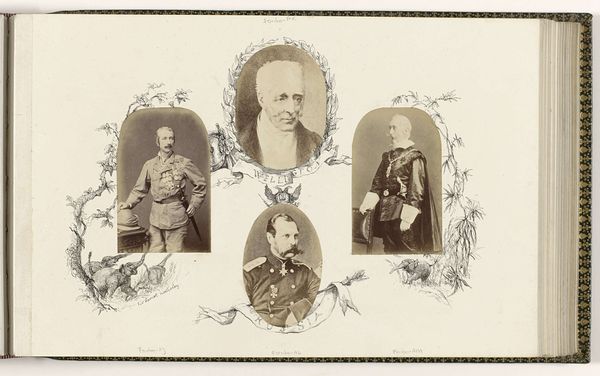
print, paper, photography, albumen-print
#
portrait
#
aged paper
#
homemade paper
#
self-portrait
#
paperlike
# print
#
light coloured
#
paper
#
photography
#
personal sketchbook
#
fading type
#
group-portraits
#
thick font
#
paper medium
#
albumen-print
#
historical font
#
columned text
Dimensions: height 130 mm, width 80 mm
Copyright: Rijks Museum: Open Domain
Gösta Florman made this photograph of King Oscar II using the wet collodion process. The image speaks to the democratizing potential of photography in the late 19th century, with portraiture no longer the exclusive preserve of the wealthy and aristocratic. It also reflects the institution of monarchy in Sweden. Oscar is presented in formal attire, complete with medals and decorations, signaling his status and authority, yet the photographic medium provides a directness and sense of access that differs from painted portraits of previous eras. Consider the role of the photographer here: Florman was commissioned to produce this image, and his studio would have been a site of social exchange, reinforcing established hierarchies even as it made the king’s image more widely available. To fully understand the cultural work performed by this photograph, we might turn to sources such as royal archives, photographic studio records, and newspaper accounts. The meaning of this artwork depends on these social and institutional contexts.
Comments
No comments
Be the first to comment and join the conversation on the ultimate creative platform.
